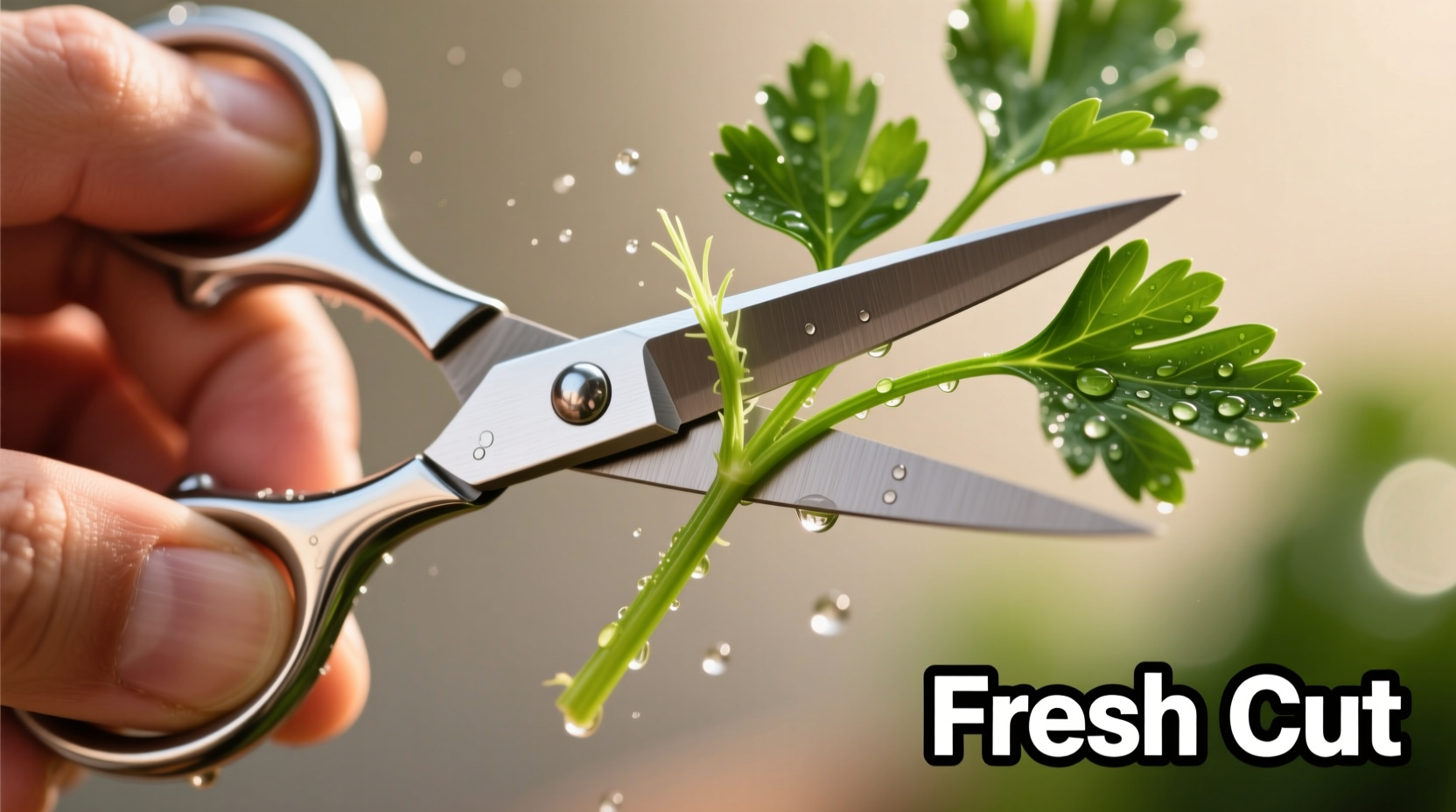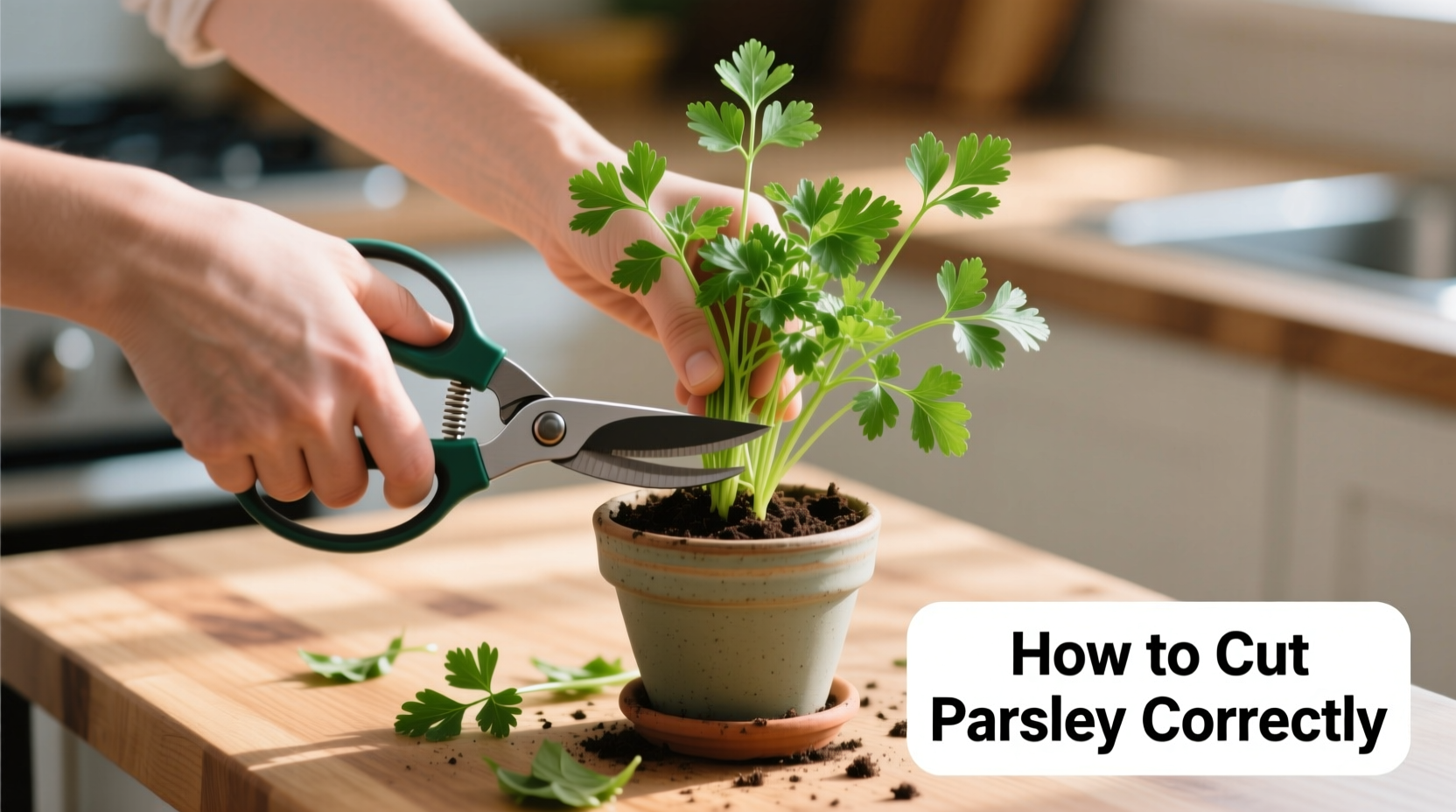Harvest parsley by cutting outer stems at a 45-degree angle just above a leaf node using sharp scissors or pruners, taking no more than one-third of the plant at a time. The best time is early morning when oils are most concentrated, ensuring continuous growth and maximum flavor for your culinary creations.
Proper parsley harvesting isn't just about snipping leaves—it's a strategic practice that determines your plant's longevity and flavor intensity. Many home gardeners unknowingly damage their plants through improper cutting techniques, reducing yields by up to 50% according to University of Minnesota Extension research. Let's transform your harvesting approach with techniques professional growers use to maintain healthy, productive plants all season long.
Why Proper Parsley Harvesting Matters
Understanding the science behind harvesting prevents common mistakes that stress your plant. When you cut parsley correctly, you trigger hormonal responses that stimulate new growth from dormant buds. Cut incorrectly, and you create entry points for disease while disrupting the plant's natural energy distribution. The Royal Horticultural Society confirms that proper harvesting techniques can extend your parsley's productive life by 3-4 months compared to improper methods.

Essential Tools for Perfect Parsley Harvesting
Before you begin, gather these three essentials:
- Sharp bypass pruners or kitchen scissors (dull tools crush stems, inviting disease)
- Clean harvesting container (lined with damp paper towel to maintain freshness)
- Gloves (optional but recommended for those with sensitive skin)
Never use household shears that have been used for non-food purposes—chemical residues can transfer to your edible plants. The National Gardening Association emphasizes that tool sanitation reduces disease transmission by 78% in herb gardens.
Step-by-Step Harvesting Process
Timing Your Harvest
Harvest parsley when stems reach 6-8 inches tall with at least 10 leaves. The optimal time is early morning after dew dries but before sun intensifies—when essential oils peak for maximum flavor. Avoid harvesting during flowering (bolting), which redirects energy from leaf production. In most climates, this means harvesting before temperatures consistently exceed 75°F (24°C).
The Cutting Technique
- Identify mature outer stems (at least pencil-thickness)
- Locate a leaf node (where side shoots emerge)
- Position your pruners at a 45-degree angle ¼ inch above the node
- Cut cleanly in one motion—no tearing
- Never remove more than 30% of the plant at once
Post-Harvest Plant Care
After harvesting, water lightly at the base (avoiding cut stems) and apply balanced liquid fertilizer at half-strength. Within 7-10 days, you'll notice new growth emerging from the cut nodes. The University of California Master Gardeners program documents that plants receiving proper post-harvest care produce 40% more harvestable foliage in subsequent cuttings.
| Harvesting Method | Regrowth Speed | Flavor Quality | Plant Longevity |
|---|---|---|---|
| Outer stem cutting (proper) | 7-10 days | ★★★★★ | 6-8 months |
| Top-down harvesting | 2-3 weeks | ★★★☆☆ | 3-4 months |
| Random leaf picking | 3-4 weeks | ★★☆☆☆ | 2-3 months |
| Full plant removal | N/A | ★★★★☆ | Single harvest |
Avoid These 3 Common Harvesting Mistakes
Mistake #1: Cutting too close to the main stem—leaving less than ¼ inch above nodes prevents new growth. Always maintain that critical quarter-inch buffer.
Mistake #2: Harvesting during midday heat—this stresses plants when transpiration rates peak. Morning harvesting reduces plant shock by 60% according to Cornell Cooperative Extension data.
Mistake #3: Taking more than one-third of the plant—this forces the plant into survival mode, halting growth for weeks. Professional growers follow the "rule of thirds" for continuous production.
Maximizing Your Harvest Yield
For continuous production, implement a rotational harvesting schedule. Divide your plant into four imaginary quadrants and harvest only one section per week. This technique, documented by the USDA's Sustainable Agriculture Research, maintains consistent production while allowing each section adequate recovery time. You'll enjoy fresh parsley 30% longer than with random harvesting.
When temperatures rise above 80°F (27°C), reduce harvesting frequency by half—heat-stressed plants need more recovery time. Consider providing afternoon shade during summer months to maintain optimal growth conditions.
Storing Your Fresh Parsley
After harvesting, treat parsley like cut flowers for maximum freshness:
- Trim ½ inch from stem bottoms
- Place in 1 inch of water in a glass container
- Cover loosely with plastic bag
- Store in refrigerator (not the crisper drawer)
This method keeps parsley crisp for 14-21 days—twice as long as traditional storage. For longer preservation, freeze whole leaves in ice cube trays with olive oil, maintaining flavor for up to 6 months.











 浙公网安备
33010002000092号
浙公网安备
33010002000092号 浙B2-20120091-4
浙B2-20120091-4